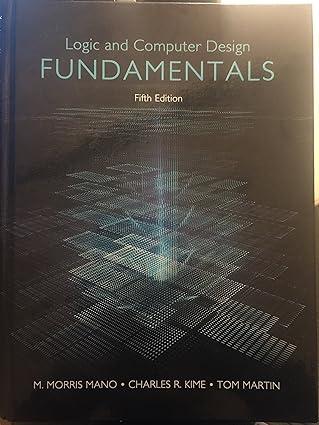A trafic light control at a simple intersection uses a binary counter to produce the following sequence
Question:
A trafic light control at a simple intersection uses a binary counter to produce the following sequence of combinations on lines A, B, C, and D: 0000, 0001, 0011, 0010, 0110, 0111, 0101, 0100, 1100, 1101, 1111, 1110, 1010, 1011, 1001, 1000. After 1000, the sequence repeats, beginning again with 0000, forever. Each combination is present for 5 seconds before the next one appears. These lines drive combinational logic with outputs to lamps RNS (red—north/south), YNS (yellow—north/south), GNS (green—north/south), REW (red—east/west), YEW (yellow—east/west), and GEW (green—east/west). The lamp controlled by each output is ON for a 1 applied and OFF for a 0 applied. For a given direction, assume that green is on for 30 seconds, yellow for 5 seconds, and red for 45 seconds. (The red intervals overlap for 5 seconds.)
Divide the 80 seconds available for the cycle through the 16 combinations into 16 intervals and determine which lamps should be lit in each interval based on expected driver behavior. Assume that, for interval 0000, a change has just occurred and that GNS = 1, REW = 1, and all other outputs are 0. Design the logic to produce the six outputs using AND and OR gates and inverters.
Step by Step Answer:

Logic And Computer Design Fundamentals
ISBN: 9780133760637
5th Edition
Authors: M. Morris Mano, Charles Kime, Tom Martin





